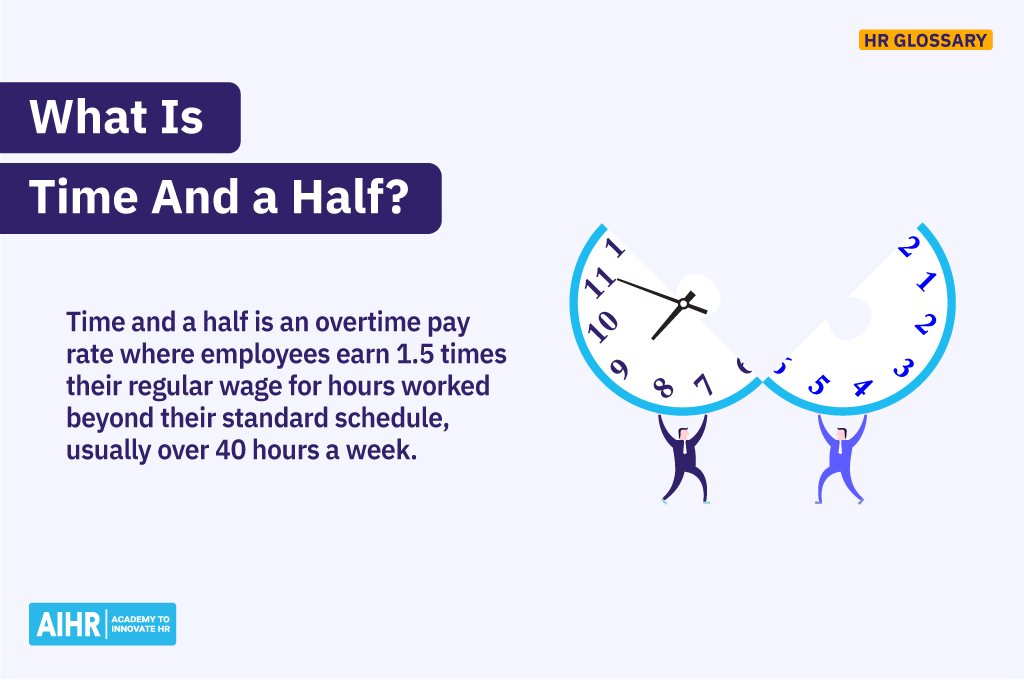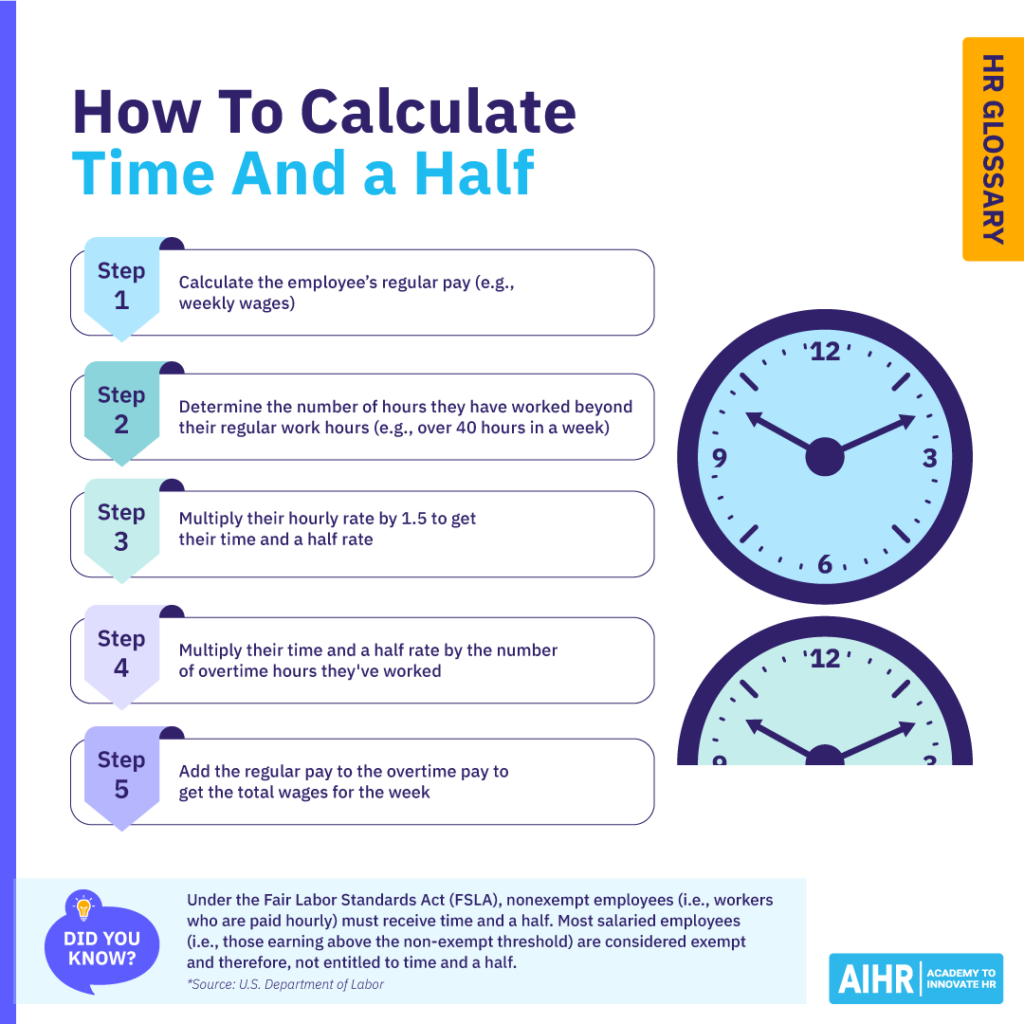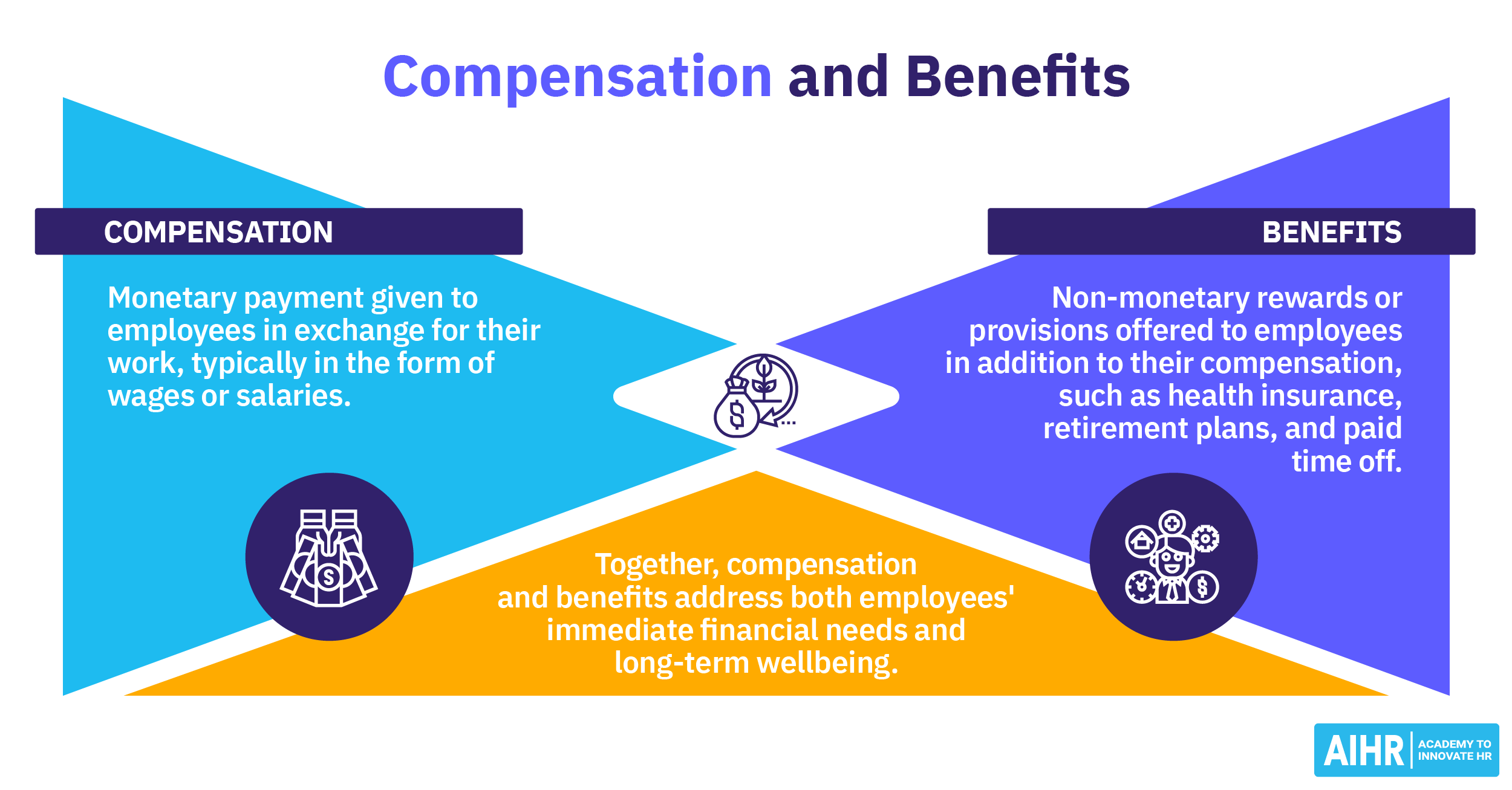Time and a Half
What is time and a half?
Time and a half is the overtime pay employees receive for the extra hours they work in a standard workweek, which is typically 40 hours. This additional pay is the result of multiplying an employee’s hourly pay rate by 1.5 for every extra hour worked.

How does time and a half work?
Here are some common scenarios in which time and a half applies:
- Weekly time and a half: When an employee works over 40 hours in a workweek, the extra hours are calculated at 1.5 times the employee’s regular hourly rate (i.e., $25 per hour x 1.5).
- Daily time and a half: Some states, like California and Colorado, require employers to pay an increased rate for hours worked beyond a certain number in a single day (e.g., over eight hours), regardless of total weekly hours.
- Time and a half holidays: Although not federally mandated, some employers offer extra pay to employees who work on holidays, often at a rate of 1.5 times their regular pay. However, this may depend on collective bargaining agreements.
- Weekend time and a half: Employers may provide higher pay to employees working on weekends during busy periods or as an incentive for those working outside regular business hours.
Exempt and nonexempt employees
Who is eligible for time and a half? It depends on whether they are exempt or nonexempt employees.
Under the Fair Labor Standards Act (FLSA), nonexempt employees are defined as those paid an hourly wage or who earn a salary below a minimum amount determined by the US Department of Labor (DOL). These employees must receive time and a half for any overtime work they do.
Exempt employees, on the other hand, are salaried workers who are not entitled to time and a half as their pay is above the nonexempt threshold. The DOL requires executive, administrative, and professional (EAP) employees to be paid at least a minimum salary amount to be exempt from the FLSA’s minimum wage and overtime requirements.
Here is an overview that outlines the differences between nonexempt and exempt employees:
Eligibility for time and a half
Not eligible
Eligible
Wage type
Salary that exceeds the nonexempt threshold set by the DOL and FLSA
Hourly wage that meets or falls below the nonexempt threshold set by the DOL and FLSA
Job duties
Executive, administrative, or professional (EAP)
Non-executive, administrative, or professional
Protected by the FLSA
No
Yes
HR tip
Ensure both exempt and nonexempt employees clearly understand your organization’s time and a half policy, particularly regarding eligibility and applicable situations (e.g., specific hours, days, or events).
How to calculate time and a half
For a straightforward method of calculating time and a half, follow these key steps:
- Step 1: Calculate the employee’s regular pay (e.g., weekly wages)
- Step 2: Determine the number of hours they have worked beyond their regular work hours (e.g., over 40 hours in a week)
- Step 3: Multiply their hourly rate by 1.5 to get their time and a half rate
- Step 4: Multiply their time and a half rate by the number of overtime hours they’ve worked.
- Step 5: Add the regular pay to the overtime pay to get the total wages for the week.
Calculation example
Take, for instance, an employee who earns $20 per hour and who works 50 hours in a 40-hour workweek. Here’s how to calculate their wages for that week:
- Calculate their regular pay: $20 per hour x 40 hours = $800
- Determine the amount of overtime they worked: 50 hours – 40 hours = 10 hours overtime
- Calculate their time and a half rate: $20 per hour x 1.5 = $30 per hour
- Calculate their time and a half pay: $30 per hour x 10 hours = $300
- Calculate their total wages for that week (regular pay + overtime pay): $800 + $300 = $1,100.

Which holidays qualify for time and a half?
Although not mandated by federal law, employers may offer it for the following holidays:
- New Year’s Day (January 1)
- Martin Luther King Jr Day (third Monday of January)
- President’s Day (third Monday of February)
- Memorial Day (last Monday of May)
- Independence Day (July 4)
- Labor Day (first Monday of September)
- Thanksgiving Day (fourth Thursday of November)
- Christmas Day (December 25).
It’s important to note that whether a specific holiday qualifies for this depends on a company’s policy, industry standards, collective bargaining agreements, and state laws.
FAQ
Overtime and time and a half are similar but not always the same. Time and a half is a common overtime rate that is essentially 1.5 times an employee’s hourly rate. However, overtime can be paid at different rates, such as double time or compensatory leave instead of overtime pay.
Holiday pay is not always time and a half. Whether or not extra pay is offered for holidays depends on company policy, state laws, and collective bargaining agreements.
Time and a half for an hourly $20 wage would be $30 ($20 multiplied by 1.5).
Employers are not required by federal law to pay time and a half for overtime work on holidays. However, some states, like Rhode Island, have specific rules about offering premium pay for working on certain holidays.









